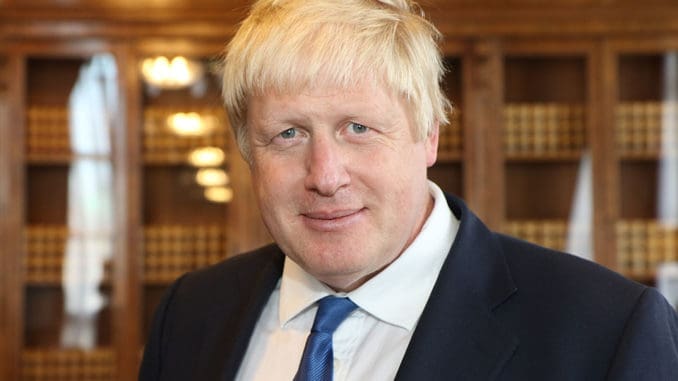
Prime Minister Boris Johnson has confirmed the national lockdown will end on December 2 and regional tier restrictions will then be put in place.
This means that from Wednesday, December 2 people can once again leave their home for ‘whatever purpose’ and meet others in outdoor spaces, adhering to the Rule of Six.
Speaking to Parliament (via video) the PM said vaccines should herald the end of restrictions, saying: “By the spring, these advances should reduce the need for economic and social restrictions. We should be able to render obsolete the very notion of a COVID-19 lockdown.
“We can now see the route out of this epidemic, provided the vaccines are approved and successfully deployed. But the spring is still months away. We cannot just click our fingers, and inoculate the most vulnerable.
“It will take long and patient work, and a giant feat of logistics. That means we must be patient, and we must be realistic. There are still hard, cold months ahead – and in the meantime we must keep the virus under control.”
There will be three tiers.
Tier 1: the Government will reinforce the importance of working from home wherever possible
Tier 2: pubs and bars must close unless they are serving substantial meals (like a full breakfast, main lunchtime or evening meal), along with accompanying drinks.
Tier 3, all hospitality will close except for delivery, takeaway and drive-through; hotels and other accommodation providers must close (except for specific exemptions, including people staying for work purposes or where they cannot return home); and indoor entertainment venues, such as cinemas, casinos and bowling alleys, must also close.
Across all tiers: The stay at home requirement will end. Shops, personal care, gyms and the wider leisure sector will reopen. Collective worship, weddings and outdoor sports can resume, subject to social distancing. People will no longer be limited to seeing only one other person in outdoor public spaces – the rule of 6 will now apply as it did in the previous set of tiers.
The 10pm curfew for restaurants and bars has been removed. Instead 10pm will be last orders with customers needing to leave the premises by 11pm (in the tiers where they are open).
In tiers 1 and 2 spectator sport and business events can now resume inside and outside with tight capacity limits and social distancing, providing more consistency with indoor performances in theatres and concert halls.
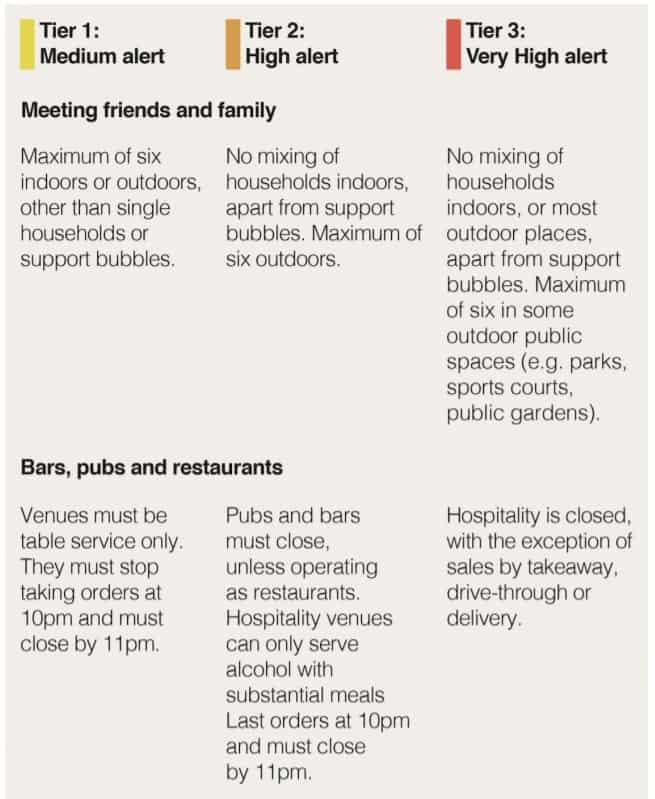
The Government is expanding eligibility of ‘support bubbles’. This will help mitigate the impacts of the restrictions on parents of children aged under 1 (or under 5, but with a disability that necessitates continuous care) and for those households where a single adult cares for someone with a serious disability.
Some limited additional household bubbling for a small number of days will be allowed at Christmas. The public are advised to remain cautious. Wherever possible people should avoid travelling and minimise social contact. Work is continuing to finalise the arrangements.
The government will offer whole community testing, such as that undertaken in Liverpool, and more targeted testing to high risk settings. Those in tier 3 will be offered a ‘six week surge’ of testing.
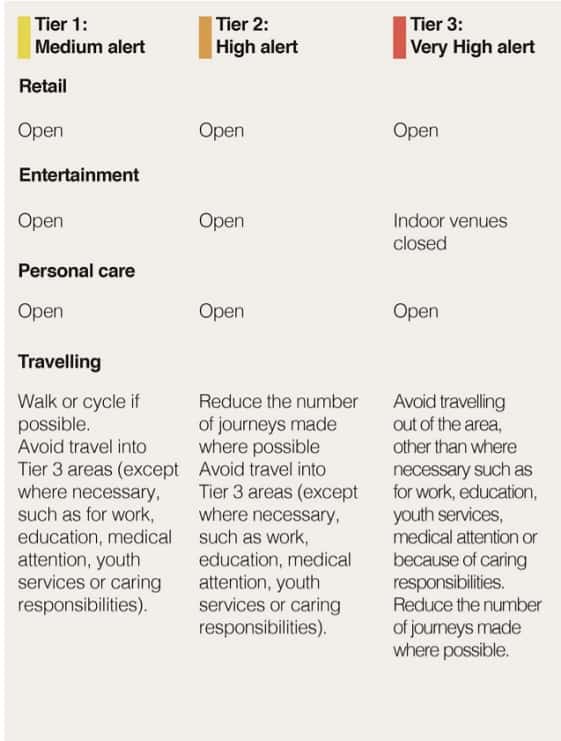
Most of the country is expected to be in the most stringent Tier 3 or high risk Tier 2. Tier allocations will be reviewed every 14 days but the system will be in place until the end of March.
The details of which areas will be in which tiers are due to be released on Thursday but will be based on:
a. Case detection rates in all age groups;
b. Case detection rates in the over 60s;
c. The rate at which cases are rising or falling;
d. Positivity rate (the number of positive cases detected as a percentage of tests
taken); and
e. Pressure on the NHS, including current and projected occupancy
The PM said enforcement powers for local authorities will be strengthened. Testing will also take place to allow two visitors per resident in care homes.
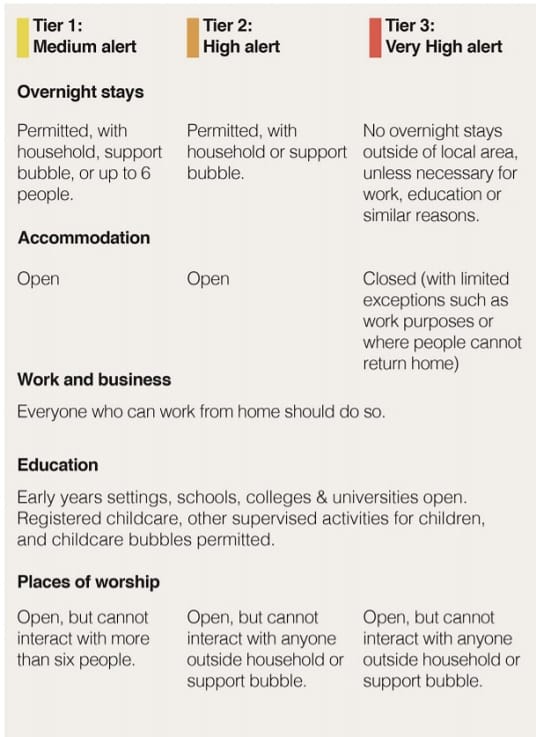
The Government also plans to introduce frequent testing as an alternative to the need for self-isolation for people who
have had close contact with someone who has COVID-19. Instead, contacts will be offered regular tests as an alternative to isolation and only have to self isolate if they test positive.
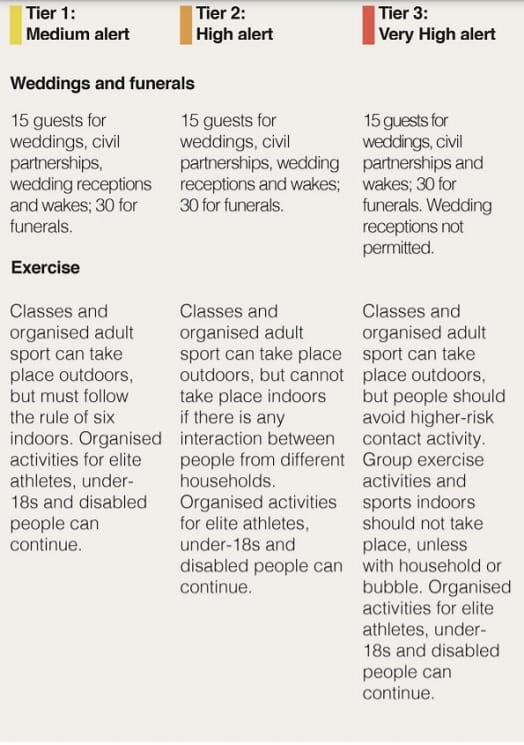
This will be trialled in Liverpool first, then some institutional settings (e.g. the NHS, care homes, education, employers) before the end of the year, ahead of rollout across the country from early next year.
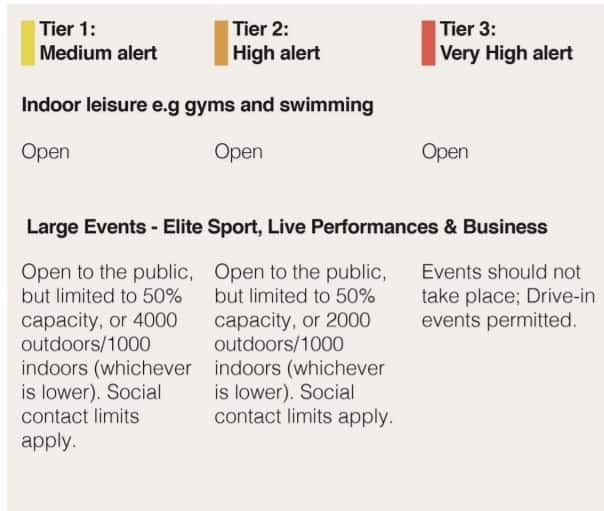
The government says a UK-wide vaccination programme will begin in December, provided regulators approve the vaccines.
Thanet is marked as one of the top ten areas with the highest infection rates in the country. Swale now has the most recorded infections across the nation. Both are likely to enter tier 3 if restrictions are imposed at district level.
Kent Public Health director Andrew Scott-Clark last week said that if restrictions are based on upper tier authority areas Kent as a whole could be forced into a top tier.
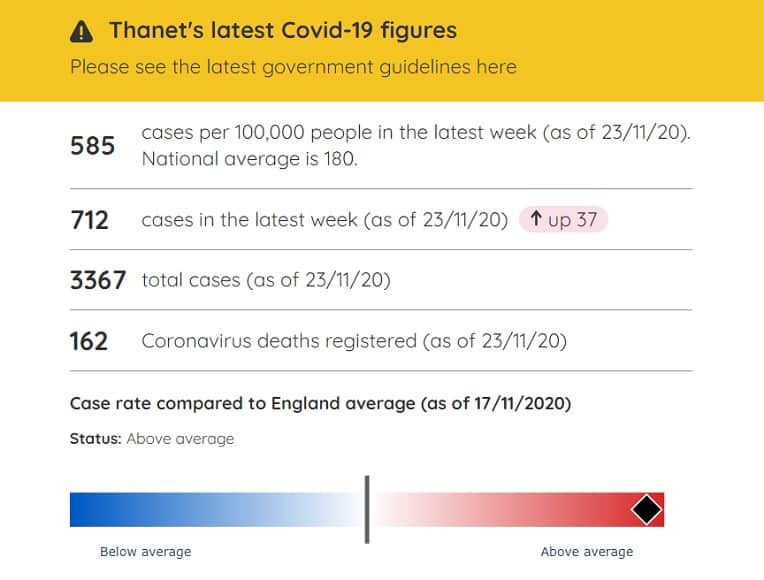
Government dashboard data today (November 23) finally shows a drop in the rate for Thanet. The rolling 7 day rate up to November 18 is 515.8 per 100,000 with 712 cases in the last week – down 3.8%.
The government dashboard data says 3,367 in Thanet have had a confirmed positive Covid test and there have been 139 people who have died within 28 days of testing positive for Coronavirus as of 23 November. Covid-19 is mentioned on the death certificate but may not be the primary cause of death.
The infection rate figures, however, are different from those published by Kent Public Health for the week until November 19 which shows Thanet at 505.9 per 100,000.

